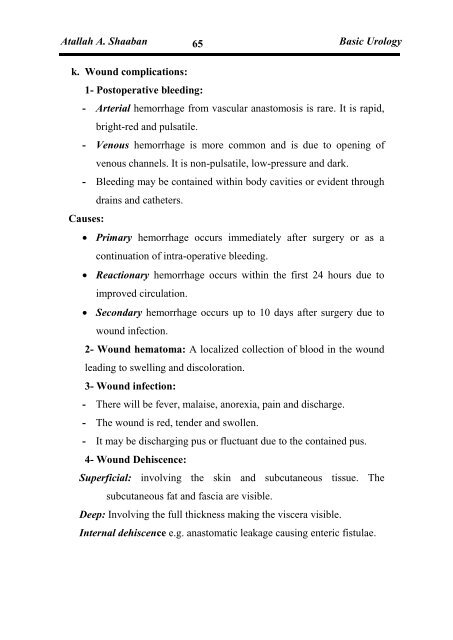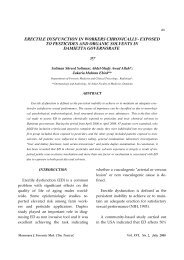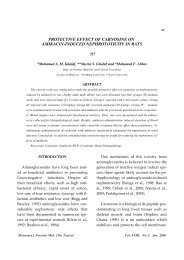Create successful ePaper yourself
Turn your PDF publications into a flip-book with our unique Google optimized e-Paper software.
Atallah A. Shaaban<br />
65<br />
<strong>Basic</strong> <strong>Urology</strong><br />
k. Wound complications:<br />
1- Postoperative bleeding:<br />
- Arterial hemorrhage from vascular anastomosis is rare. It is rapid,<br />
bright-red and pulsatile.<br />
- Venous hemorrhage is more common and is due to opening of<br />
venous channels. It is non-pulsatile, low-pressure and dark.<br />
- Bleeding may be contained within body cavities or evident through<br />
drains and catheters.<br />
Causes:<br />
Primary hemorrhage occurs immediately after surgery or as a<br />
continuation of intra-operative bleeding.<br />
Reactionary hemorrhage occurs within the first 24 hours due to<br />
improved circulation.<br />
Secondary hemorrhage occurs up to 10 days after surgery due to<br />
wound infection.<br />
2- Wound hematoma: A localized collection of blood in the wound<br />
leading to swelling and discoloration.<br />
3- Wound infection:<br />
- There will be fever, malaise, anorexia, pain and discharge.<br />
- The wound is red, tender and swollen.<br />
- It may be discharging pus or fluctuant due to the contained pus.<br />
4- Wound Dehiscence:<br />
Superficial: involving the skin and subcutaneous tissue. The<br />
subcutaneous fat and fascia are visible.<br />
Deep: Involving the full thickness making the viscera visible.<br />
Internal dehiscence e.g. anastomatic leakage causing enteric fistulae.




